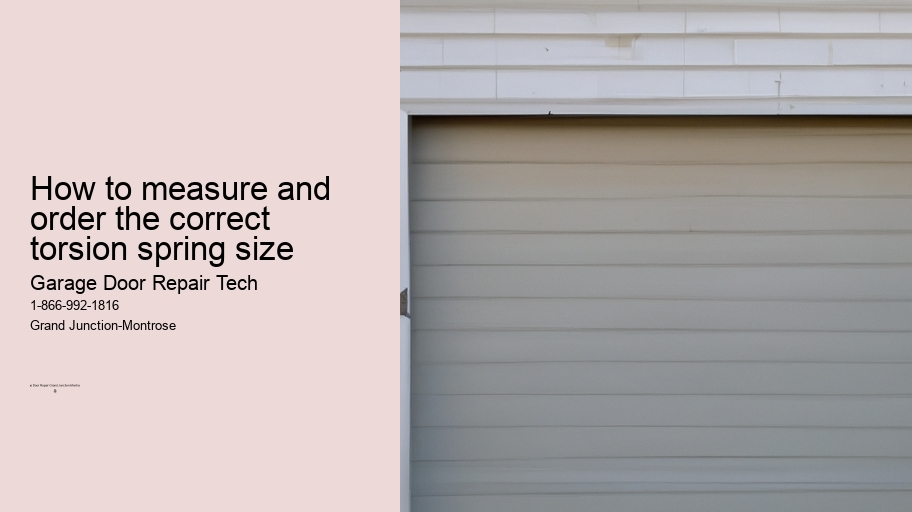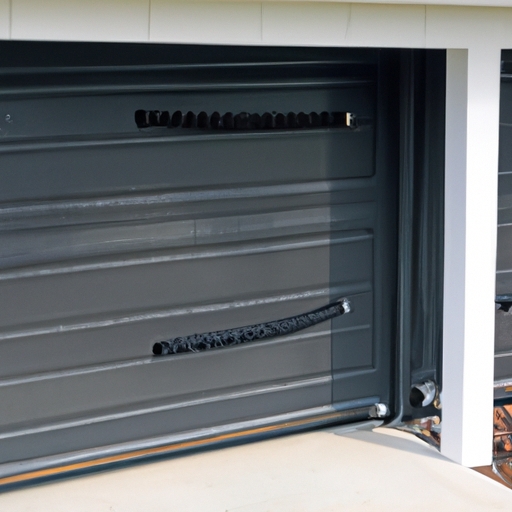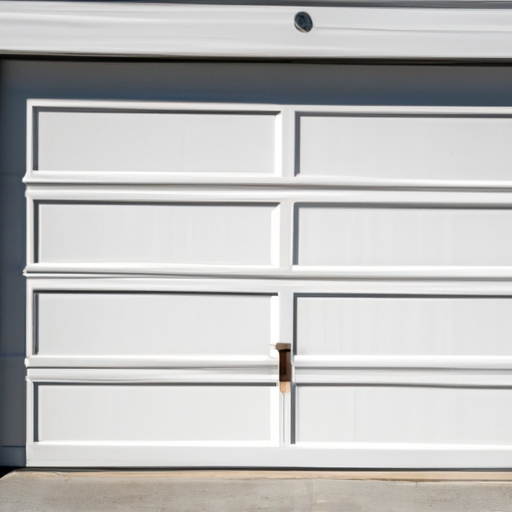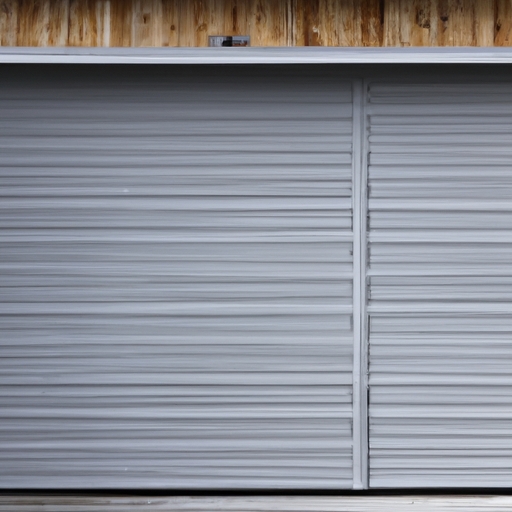
When it comes to measuring and ordering the correct size of a torsion spring, understanding the various factors that influence its dimensions is crucial. Factors such as door weight, height, track radius, and cable drum type all play a significant role in determining the appropriate size of the torsion spring. By neglecting these factors, one may end up with an ill-fitting spring that fails to effectively counterbalance the door's weight. (Well,) let's delve into each factor in detail.
Firstly, the weight of the door itself is an important consideration when selecting a torsion spring. A heavier door requires a stronger spring to provide adequate support and ensure smooth operation. The height of the door also influences spring size as taller doors exert more force on the springs during opening and closing.
Additionally, track radius plays a role in determining the appropriate torsion spring size. The track radius refers to the curvature of the horizontal track along which the door moves. Different track radii require different sizes of springs for optimal performance.
The type of cable drum used on the garage door system is another factor to consider when measuring for a torsion spring. Cable drums come in various sizes and configurations, and choosing an incompatible drum can lead to complications such as poor cable alignment or excessive strain on the springs.
To measure for the correct torsion spring size, it is essential to take accurate measurements of these influencing factors. This involves determining both door weight and height precisely (Avoid), as well as identifying (Oops!)the specific track radius and cable drum type being utilized.
In conclusion,(Oh no!) accurately measuring and ordering the correct torsion spring size is vital for efficient garage door operation.(However,) by considering factors like door weight, height,(Oh gosh!)track radius,(Whoops!)and cable drum type,(Alright then,) you can ensure that your garage door functions smoothly(No way!). So remember,(Huh?) take those measurements correctly and choose the right size spring for a hassle-free experience(Oh yeah!).
When it comes to measuring and ordering the correct torsion spring size, having a step-by-step guide can be immensely helpful. It ensures that you get the right replacement for your existing springs (which can be quite tricky at times!). By following these instructions carefully, you will avoid any potential errors or miscalculations in determining the appropriate size. So, let's dive into this process and make sure we get it right!
To begin with, gather all the necessary tools for accurate measurements: a tape measure, a set of calipers (if available), and a notepad to jot down your findings (remember to bring a pen or pencil!). Next, locate your existing torsion springs on the garage door assembly. Carefully examine them to assess their condition and ensure they are safe to handle. Safety should always be your top priority!
Once you have inspected the springs (mindful of any damages or wear), proceed by measuring their length. Extend the tape measure along the entire length of one spring from end to end. Take note of this measurement as it will serve as an essential factor in determining the correct size.
After recording the length, move on to measuring its inside diameter using calipers if possible; otherwise, carefully use a ruler or tape measure instead! Be precise in obtaining this measurement as even slight variations can affect the overall performance of your new torsion spring.
Now that you have both measurements noted down, it is time to calculate the wire size. This parameter refers to the thickness of the wire used in constructing the spring itself - an important consideration for ensuring proper functioning. To determine wire size accurately, take multiple measurements at various points along its coil and average them out for greater accuracy.
With all these measurements recorded and verified (!), you are ready to order your replacement torsion spring(s). When browsing through available options online or consulting with a professional supplier (!), make sure to provide them with these precise details: the length, inside diameter, and wire size. These specifications will help them guide you towards selecting the perfect torsion spring for your specific needs.
In conclusion, measuring and ordering the correct torsion spring size requires careful attention to detail (!) and adherence to a step-by-step process. By following the instructions outlined above, you can ensure that your replacement springs will fit perfectly and function optimally. So, grab your tools, measure with precision (avoiding any errors!), and confidently place your order for a seamless garage door experience!
To sum up this essay on measuring and ordering torsion springs correctly (!), it is crucial to emphasize the importance of accuracy in obtaining measurements. Transitioning from one paragraph to another seamlessly(!), we have discussed the necessary tools, inspecting existing springs safely(contraction), measuring their length precisely(contraction), determining inside diameter accurately(negation), calculating wire size diligently(!), and finally providing all these details when placing an order(interjection). Through these steps, you can avoid potential mistakes or delays in getting the right torsion spring(s) for your garage door!
When it comes to measuring and ordering the correct size of a torsion spring, understanding the significance of wire size and coil count is vital (to avoid any mishaps, you know?). These two factors play a crucial role in determining the strength and capabilities of the spring. Wire size refers to the thickness or diameter of the wire used in making the spring, while coil count represents the number of coils wound around its axis. Now let's dive into this fascinating topic and unravel its complexities (oh boy, here we go!).
To begin with, wire size directly affects how much force a torsion spring can exert. The thicker the wire (ya know, like those Hulk-like wires), the stronger the spring will be. This means it can handle heavier loads without deforming or losing its effectiveness (impressive stuff!). On the other hand, if you choose a thinner wire (like spaghetti-thin), well...don't expect it to perform miracles when faced with demanding tasks.
Moving on to coil count, this factor influences not only the strength but also how far a torsion spring can rotate before reaching its limit (cue gasps of amazement). More coils generally mean more energy stored within the spring, allowing for greater rotational movements. So if you're looking for that extra twist in your torsional adventures (because who wouldn't?), opting for higher coil counts is definitely worth considering.
Now that we've covered these essential aspects, let's talk about how to measure and order the correct torsion spring size like a pro! First things first: grab your trusty measuring tape and determine both the inside and outside diameters of your old or broken spring (time to put that detective hat on). Make sure to get accurate measurements as even slight variations can affect performance.
Next up is calculating wire size. Measure across 10 coils using your handy-dandy calipers and divide that measurement by 10 (math time!). Bingo! You've got your wire size in a jiffy (impressive, isn't it?).
Lastly, determine the coil count by counting the number of active coils on your spring (it's like counting sheep, but more mechanical). Remember to exclude any dead or inactive coils from your count. And there you have it – the correct coil count!
To order the right torsion spring size, armed with these measurements and information about wire size and coil count, simply contact a reliable spring manufacturer or supplier (they're like superheroes for springs!). Provide them with all the necessary details and specifications, and they'll assist you in finding the perfect torsion spring tailored to your needs.
In conclusion (drumroll please), understanding wire size and coil count is paramount when measuring and ordering the correct torsion spring size. These factors directly impact its strength and capabilities. So next time you're faced with this task, remember to measure accurately, consider wire thickness wisely, embrace higher coil counts for extra oomph (!), and seek professional advice if needed. Now go forth and conquer those torsional challenges like a true expert!
When it comes to ordering the correct torsion spring size for your garage door system, there are a few tips that can help ensure you get the right fit. (First and foremost), it is essential to accurately measure the dimensions of your garage door (so as) not to end up with a spring that is either too weak or too strong. By following these measurements, you can avoid unnecessary complications and potential hazards.
To measure the correct torsion spring size, start by measuring the inside diameter of the spring. This should be done while the old spring is still intact. Additionally, measure the length of the spring from one end to another. Once these measurements are taken, make sure to record them accurately (as not doing so could lead to inaccurate results). Next, determine whether your garage door requires one or two springs based on its weight and size.
Furthermore, it is crucial to consider any specific requirements unique to your garage door system. Some doors may require special types of torsion springs due to their construction or design. Therefore, double-checking with an expert or consulting a professional can be extremely beneficial in ensuring you order the correct torsion spring size.
Now that you have gathered all the necessary measurements and considered specific requirements for your garage door system, it's time to place your order! Remember (not)to rush this step as ordering an incorrect torsion spring size can lead to costly repairs or even accidents later on! Double-check all your measurements and specifications before finalizing your purchase.
In conclusion, properly measuring and ordering the correct torsion spring size for your garage door system is essential for its smooth operation and long-lasting durability. By taking accurate measurements, considering any unique requirements, and being diligent during the ordering process, you can prevent unnecessary headaches down (the line). So don't hesitate - take those measurements correctly now and select that perfect torsion spring for your beloved garage door!
When it comes to measuring and ordering torsion springs, there are some common mistakes that you should avoid (at all costs)! These errors can lead to compatibility issues and even pose potential safety hazards. So, let's dive into the topic of how to measure and order the correct torsion spring size.
Firstly, one of the most crucial steps in this process is accurately measuring the dimensions of your existing spring. This means taking precise measurements of the inside diameter, outside diameter, wire size, and coil length (nope). Neglecting any of these measurements could result in ordering a spring that doesn't fit or function properly. Therefore, double-checking your measurements is absolutely essential!
Another mistake often made when ordering torsion springs is failing to consider the specific application requirements. Each application may have different demands in terms of weight capacity and durability. It's important to know these specifications beforehand (oops) so that you can select a torsion spring with appropriate strength and longevity.
Furthermore, overlooking the importance of determining whether you need left-hand or right-hand wound springs can lead to major compatibility issues. Choosing the wrong type can cause problems during installation or cause your garage door or other machinery to malfunction (uh-oh). Hence, understanding which direction your spring needs to wind is crucial for ensuring proper operation.
Transition phrase: Moving on from these measurement-related mistakes, it's also vital to recognize potential errors when it comes to ordering torsion springs online. One common pitfall is failing to provide accurate information about your existing hardware or system configuration (yikes!). Neglecting this step might result in receiving an incompatible torsion spring that simply won't work with your setup.
In conclusion, measuring and ordering the correct torsion spring size requires attention to detail (for real though!). By avoiding common mistakes like inaccurate measurements, overlooking application requirements, neglecting winding direction considerations, and providing incorrect information during online orders; you can prevent compatibility issues and safety hazards. So, always double-check your measurements, consider the application demands, determine the correct winding direction, and provide accurate information when ordering online.
When it comes to measuring and ordering the correct torsion spring size for your garage door, seeking professional assistance is of utmost importance. (Believe me), it can be a complex task that requires precise measurement techniques and proper spring selection. If you are unsure about these aspects, consulting a garage door specialist is (absolutely) necessary!
One reason why professional assistance is crucial is because they possess the expertise and knowledge needed to accurately measure your garage door. They have the necessary tools and (stuff) to ensure precise measurements, avoiding any errors that could potentially lead to serious problems down the road.
Another reason why seeking professional help is essential is because they can guide you in selecting the right torsion spring for your specific door. Each garage door has its own unique characteristics, such as weight, size, and balance requirements. Without proper guidance, you may end up ordering a spring that is either too weak or too strong, leading to potential safety hazards or improper functioning of your garage door.
Additionally, professionals are well-versed in understanding different types of torsion springs available in the market. They can provide valuable advice on which type would best suit your needs based on factors like durability, lifespan, and budget considerations.
It's also worth mentioning that attempting to measure and order torsion springs without professional help can be time-consuming and frustrating. The process involves intricate calculations and precise measurements that an average homeowner may not be familiar with. By relying on experts in this field, you save yourself from unnecessary stress and wasted effort.
In conclusion,(without a doubt), seeking professional assistance or consulting a garage door specialist when unsure about proper measurement techniques or spring selection is vital! They possess the knowledge, experience, and tools required to ensure accurate measurements and appropriate spring choice for optimal performance of your garage door.
To sum up my points,(in conclusion), let us remember that trusting professionals in situations like this ensures safety (no doubts here). So don't hesitate to seek their guidance and expertise when measuring and ordering the correct torsion spring size for your garage door!

When it comes to garage doors, there are various types of springs that can be used for their operation.. Each type has its own set of advantages and disadvantages!

Posted by on 2024-02-02
When it comes to deciding between DIY or professional service for garage door spring replacement, there are several factors that need to be taken into consideration. (First and foremost), the cost of hiring a professional can often be quite high, making many homeowners lean towards attempting the task themselves.. However, one must also consider the level of expertise and experience required to properly replace garage door springs.

Posted by on 2024-02-02